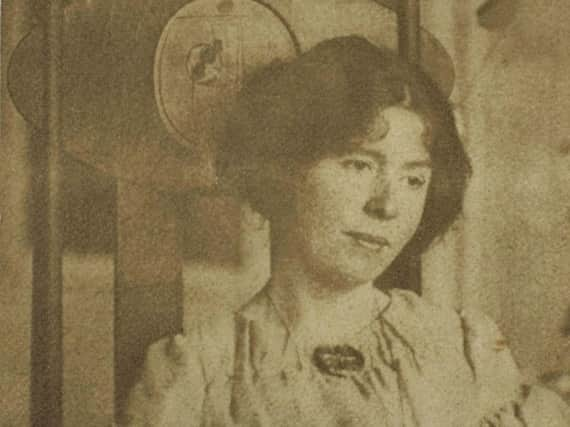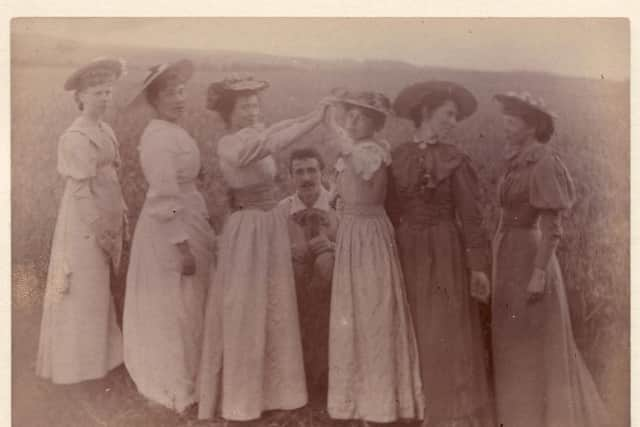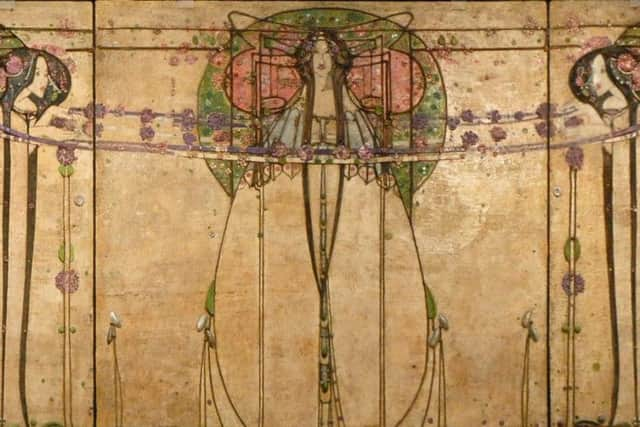Into the mysterious world of artist Margaret Macdonald Mackintosh


Next week marks the 155th anniversary of the birth of artist Margaret Macdonald Mackintosh, whose role in the success of her husband, architect and designer Charles Rennie Mackintosh, has long been debated and will perhaps never be truly known.
Dr Robyne Calvert, Mackintosh Research Fellow at Glasgow School of Art, said there had been “a lot of assumptions” over whether Margaret’s marriage had helped or hindered her own reputation as an artist.
Advertisement
Hide AdAdvertisement
Hide AdShe said: “Margaret is an extremely interesting character and if we are thinking in a general way it is pretty clear that women artist, particularly women who had a working relationship with male counterpart, were overshadowed“Women artists also tended to get lost when they get married. They tended to lose their careers full stop.“But Margaret is interesting because she didn’t get lost.”


Dr Calvert said Margaret was supported by her husband to exhibit her own work and continued continued to use her own name to do so. Then, female artists typically used only their first initial and surname to get into exhibitions “and be taken more seriously”.
Margaret Macdonald was born in Tipton, near Wolverhampton in 1864. Her father was a colliery manager and the family relocated to Glasgow with Margaret and her younger sister Frances enrolling in Glasgow School of Art to study design.
By 1900, she was married to Charles Rennie Mackintosh with her most famous pieces direct results of her collaborations with her husband, such as the May Queen frieze from the Ingram Street Lunch and Tea Room, which the couple worked on in the months leading up to their wedding.


There are very few sources that help untangle the realities of their working relationship but one of them is a letter written to a friend in Germany around this time.
Mackintosh wrote: “Just now, we are working on the two large panels for the frieze. Miss Margaret Macdonald is doing one and I am doing the other. We are working on them together, which is very pleasant.”
A letter by Mackintosh to his wife sent from France in 1927, adds: “You must remember that in all my architectural efforts you have been half if not three quarters of them.”
Dr Calvert said it was clear Margaret was “quite a significant source of influence, if not an outright artistic partner” to her husband.
Advertisement
Hide AdAdvertisement
Hide AdShe added: “They worked together not out of necessity. Glasgow had a rich offering of artisans and Mackintosh employed them. The Mackintoshes worked together because they desired to do so and as a consequence we might be unsurprised that one of the themes underpinning much of their collaboration is romantic love.”
The Mackintosh’s vast circle of friends included Jessie Keppie, the daughter of Charles’ boss, architect John Keppie. Some maintain Charles was engaged to Jessie before he fell for Margaret.
The group ran as The Immortals, spending time in the countryside at Keppie’s country home near Dunure in South Ayrshire, which was known as the Roaring Camp. Celtic mythology, nature, and fairytales were among the group's inspiration.
Dr Calvert said Margaret Mackintosh and her peers, including Jessie Newbery, head of embroidery at GSA and Ann Macbeth, a respected embroiderer and suffragist, developed a very specific style of clothing worn in Glasgow’s artistic circles of the day.
“These clothes were not typical of the period. They were making dresses from rich fabrics that were covered in hand embroidery or stencilled and decorated with roses and leaves and fancy collars.
“It is very much a Glasgow Style look. This is their own work, this was not Mackintosh. It was an expression purely of themselves.”